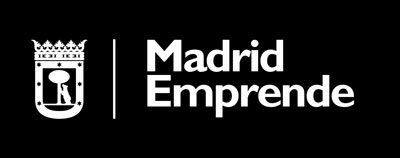- Business leadership is a skill that everyone can develop.
- Charisma, enthusiasm or good communication are some of its key characteristics
Business leadership is a skill that all people can develop and, through which, the leader of the company or department is able to influence workers to achieve their objectives. In fact, large companies do not look for bosses, they look for leaders who improve employee motivation and achieve an ideal environment for the best work development.
Characteristics of business leadership
The most common characteristics are:
- Charisma
- Enthusiasm
- Good communication and team motivation skills
- Organization and ability to manage resources
- Future vision and strategy
- Negotiation, decision-making and resolution skills
- Creativity
- Discipline
- Active listening
- Honesty
- Good image
10 types of business leadership
These are the 10 types of business leadership:
Visionary leadership
Visionary leaders are characterized by keeping their approaches clear and are capable of setting common objectives that take the corporation to a better position. They are recognized for their ingenuity in resolving adverse situations and tend to be self-critical and demanding of themselves.
Charismatic leadership
A charismatic leader attracts other people around him and easily establishes working relationships. The enthusiasm that characterizes them can generate positivity within the organization to create more pleasant and relaxed work environments. They tend to inspire other people and have great oral and non-verbal communication skills.
Directive leadership
This type of leadership can direct their teams based on a very detailed strategy and tactics that include the execution of effective actions. As for their teams, managerial leadership seeks collaboration, not competition among them. And, to achieve this, it motivates from unity to face common objectives.
Coaching leadership
Coaching leadership is based on sharing knowledge as a basis for the relationship between collaborators, thus being able to develop activities and solve problems. A leader coach It is the one who is accessible and collaborative, constantly putting feedback into practice.
Democratic or participatory leadership
Democratic leadership is one in which the leader works with team members to make decisions, being effective in situations where creativity and flexibility are needed. This leader encourages team participation and collaboration in making relevant decisions.
Coercive leadership
It is a leadership that focuses on carrying out activities immediately, that is, enforcing orders and supervising with rigor. Their intervention becomes important in situations in which failures occur in the operation and immediate solutions are required.
Autocratic leadership
Autocratic leadership is a leadership style in which the leader makes decisions without the participation of team members. In this leadership style, the leader has complete control over the team and makes all important decisions quickly and accurately.
Transactional leadership
In this case, the leader establishes an exchange with the team members, who are expected to meet objectives and expectations in exchange for rewards, with a transaction approach between the parties. This leadership style can be effective when a high level of control and supervision is needed.
Transformational leadership
Transformational leadership is a leadership style in which the leader inspires and motivates team members to reach their full potential. The leader encourages creativity and innovation, and is good leadership if a high level of team motivation and commitment is needed.
Situational leadership
Situational leadership would be in which the leader adapts his style to the needs and abilities of the team. Specifically, he evaluates the situation and adjusts his leadership style to meet the needs of the team, being very useful for situations that require flexibility and adaptability.

